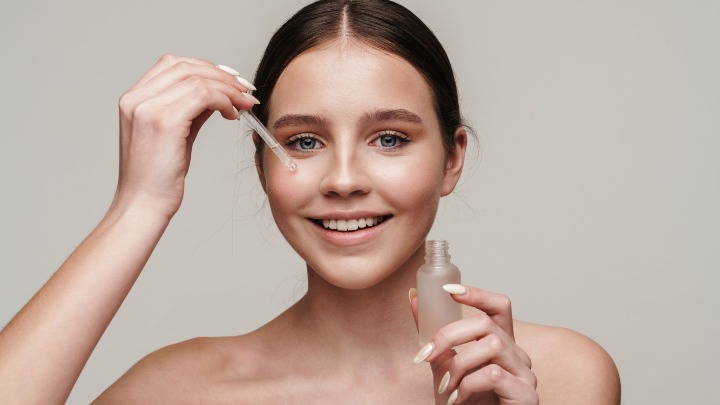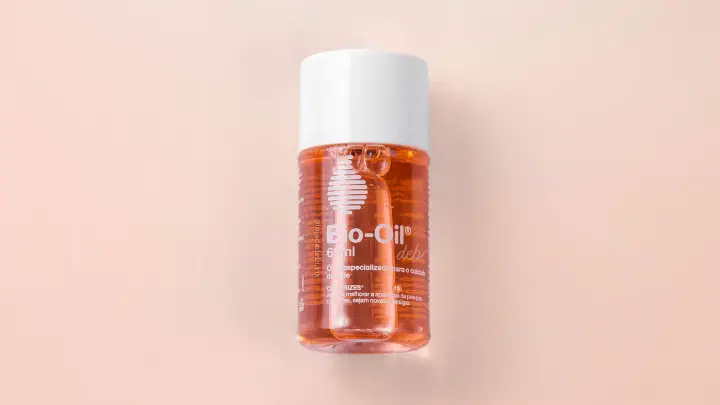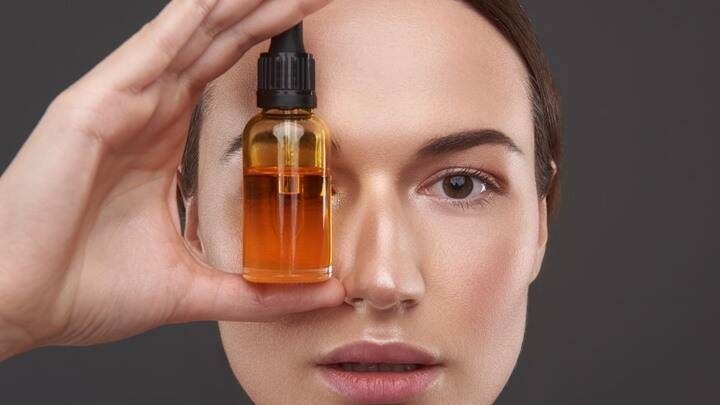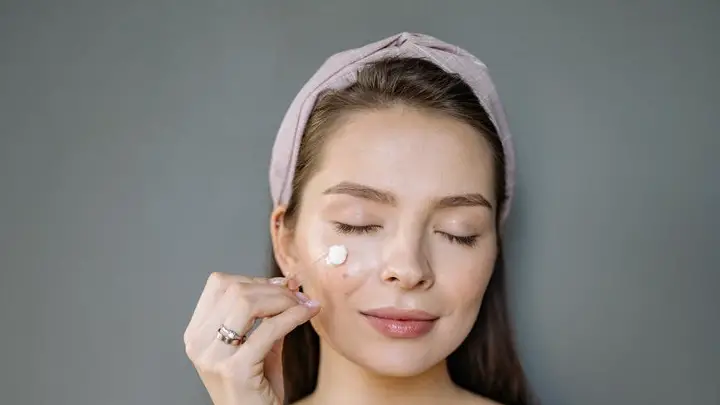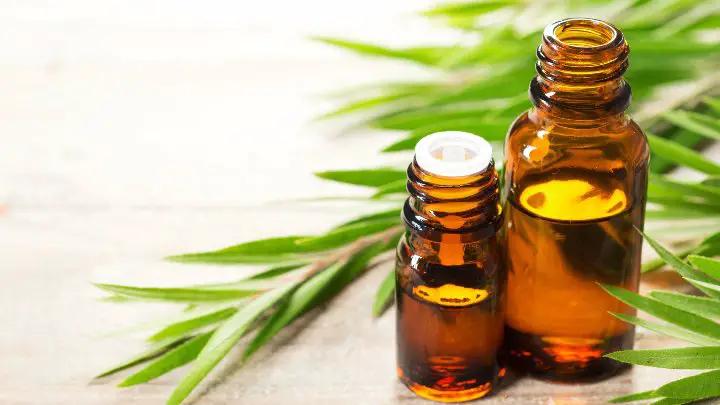Niacinamide is a form of Vitamin B3 that can have many benefits for your skin. It’s also one of the most important ingredients in skincare, and you can find it in many different anti-aging products.
Niacinamide can help reduce the appearance of wrinkles, blotchy skin, age spots, and acne scars. It can also help improve skin elasticity and create a more even skin tone.
In this article, we’ll see what benefits niacinamide provides for the skin and how to get the most out of this ingredient.
Benefits of Niacinamide for Skin
1. Treats Acne
Acne is caused by hormonal changes, genetics, stress, and other factors. One way to combat it is by using products with niacinamide.
Niacinamide reduces acne and shrinks pores by slowing oil production in the skin. It also works to create a healthy-looking complexion by evening out skin tone and texture.
2. Promotes Cell Turnover
Cell turnover is the life cycle of cells in your skin. When new skin cells grow, old ones die and shed. In healthy people, the process of cell turnover occurs about every 27 days, but for those with damaged skin, cell turnover can happen much more slowly.
Niacinamide helps to promote normal cell turnover by removing dead cells from your skin’s surface and reaching down into the deeper layers to promote cellular growth.
3. Improves Skin Hydration
“Niacinamide helps with skin hydration by increasing the water content of the outer layer of the skin and also makes it softer and smoother,” says Dr. Brendan Camp, a New-York based dermatologist who uses the ingredient on his patients.
Therefore, it is commonly used in moisturizers and anti-aging creams to repair dry, damaged skin and make it look healthier.
4. Brightens Skin
Niacinamide is effective at treating hyperpigmentation by reducing melanin production and increasing cell turnover rates. Hyperpigmentation occurs when cells known as melanocytes produce too much melanin — the dark pigment responsible for giving your skin its color.
“When this happens, you’re left with dark spots on your skin that are difficult to get rid of without help from ingredients like niacinamide, Dr. Camp explains”.
5. Supports Barrier Function
Research shows that niacinamide can be effective in improving barrier function by increasing skin ceramide content. Ceramides are naturally found in human skin and are part of what keeps our skin barrier strong and healthy.
“By helping to increase ceramides, niacinamide helps support the skin barrier and prevent hyperkeratinization,” Camp says.
In his words, hyperkeratinization is a process that happens when skin becomes too dry or irritated and causes dead skin cells to accumulate on the surface and clog pores.
6. Reduces Aging Signs
“Niacinamide is a form of vitamin B3 that helps to improve the appearance of aging skin,” says Dr. David E. Bank, M.D., FAAD., founder, and director of The Center for Dermatology, Cosmetic & Laser Surgery.
“It’s an effective, yet gentle, anti-inflammatory that works by reducing the activity of enzymes that break down collagen, which keeps skin healthy and looking younger.”
7. Treats Rosacea
You can use niacinamide to reduce symptoms of skin conditions such as rosacea and dermatitis. In some cases, doctors recommend it in place of a prescription corticosteroid to treat these conditions because it has fewer side effects than the medication.
You can also use niacinamide in combination with other medications or supplements to treat the underlying causes of these skin problems.
8. Tightens Skin
One of the most important benefits of niacinamide for the skin is its anti-aging effects through stimulating collagen production.
This is especially important for aging, damaged skin as it helps tighten skin and reduce the appearance of enlarged pores, which can result from loss of elasticity.
9. It’s Anti-inflammatory
Niacinamide works by slowing down an enzyme called hyaluronidase. Hyaluronidase normally breaks down the connective tissue in your joints, but it also plays a role in inflammation in your skin.
The enzyme causes redness and swelling when it breaks down hyaluronic acid, which keeps your skin flexible and plump. By slowing down hyaluronidase, niacinamide reduces inflammation and improves skin texture.
10. Combats Free Radicals
Niacinamide is an antioxidant that fights free radicals, which are harmful molecules that damage skin cells and contribute to the aging process.
Free radicals tend to develop more in areas where there are high levels of sun exposure, such as the face, neck, and hands. This also explains why topical use of niacinamide can be an effective way of reducing signs of aging.
Side Effects of Niacinamide
As with any skincare treatment, niacinamide has potential side effects, most commonly stinging the face and itching the skin. These side effects tend to be more severe when using higher doses of niacinamide.
You may also notice that your skin takes on a red tint when you use niacinamide. This is because niacinamide increases blood flow, which helps give you more radiant-looking skin.
Furthermore, some people experience some flaking or peeling on the skin after starting the niacinamide treatment. This is completely normal and just means that your skin is exfoliating itself to reveal newer, fresher skin.
Niacinamide’s side effects should be taken seriously and monitored by a doctor. Before you start using this vitamin, make sure you’re aware of all potential side effects, so you can seek medical attention in the event they occur.
Who Should Use Niacinamide?
The short answer is anyone who wants to. Niacinamide is an amazing ingredient that can do wonders for your skin, even if you have oily or acne-prone skin. However, if you fall into one of the following categories, there’s even more reason to make it a part of your routine.
1. Oily skin type
Oily skin is normal and healthy, but it can be damaging to your skin in the long run. Niacinamide helps the skin maintain oil production and prevents moisture loss, which makes it an excellent choice for people with oily skin types.
2. Sensitive skin type
If you’re easily irritated by harsh chemicals, niacinamide should be at the top of your list. This is a milder form of vitamin B3 that won’t irritate sensitive or dry skin types.
3. People with dull complexion
If you have a dull or uneven skin tone, niacinamide can help even out your complexion. It’s particularly effective for treating hyperpigmentation that occurs after acne breakouts, but it also works well in brightening skin and preventing dark spots.
4. People with damaged or aging skin
Niacinamide is especially helpful for people with aging or damaged skin because it helps increase collagen production. It’s the best option if you want to improve your skin’s appearance without surgery or other invasive procedures.
How to Add Niacinamide to Your Skincare Routine
Niacinamide is an active ingredient in many skincare products like cleansers, toners, serums, eye creams, and lotions. But for quick results, experts recommend using a serum with a high concentration of niacinamide.
Step 1: Clean your face with a gentle face wash
Find a product that is gentle on your skin and does not cause any irritation or flaking. Massage it into your skin and rinse with lukewarm water to get rid of any impurities.
Step 2: Use a toner to purify your pores
Toners are great for minimizing pores, removing dirt and dead cells, as well as absorbing excess oil from the skin. This will help your serum to penetrate deeply into the skin and give you the best results possible.
Step 3: Apply your niacinamide serum
Take a few drops of your niacinamide product and apply them to your face in a gentle upward motion. Massage the serum into your skin and let it absorb naturally without wiping or rinsing it off.
Step 4: Apply moisturizer and sunscreen
Wait for 10 minutes or until the serum absorbs into your skin before applying your favorite moisturizer. Also, ensure to apply sunscreen before going out in the sun to prevent sun damage to your skin.
Using this simple four-step method, you can get the skin you’ve always wanted, and you’ll look years younger. Apply twice daily for quicker results.
How Long Does It Take for Niacinamide Results to Show?
While it might seem like you should see immediate results after using niacinamide, that’s not the case. It could take up to three months for the full effect of niacinamide to be visible on your skin.
Waiting for results can be hard and you may be tempted to give up if you don’t see them quickly. But before you stop using niacinamide, remember that even though immediate results aren’t always possible, changes are occurring on your skin.
So stick with your routine for at least three months before deciding whether or not you’ve noticed a difference. If you’re still not seeing results after that period, then maybe it’s time to find an alternative.
What Can You Use With Niacinamide for Glowing Skin?
You can combine niacinamide with other safe, non-toxic skincare ingredients like hyaluronic acid. Hyaluronic acid is a humectant that attracts water from the air and holds on to it for up to 72 hours. This makes hyaluronic acid ideal for moisturizing skin.
When used together, niacinamide and hyaluronic acid form a stable molecule that penetrates the skin deeply. Niacinamide assists with skin blemishes, excess sebum production, and aging signs, while HA helps to retain moisture in the skin.
The benefits of using niacinamide and hyaluronic acid include smoother, younger-looking skin as well as improvements to existing skin conditions such as acne or dermatitis.
FAQs
When should you use niacinamide?
After cleansing. The ideal time to apply niacinamide is immediately after cleansing your skin so that you can get all of its benefits.
For the best results in your skincare routine, apply a niacinamide serum every morning and evening after cleansing. It is also important to wait at least 5 minutes before applying a moisturizer on top of the niacinamide serum.
Can niacinamide break you out?
Yes, it can. If your skin is very sensitive, then a high dosage of niacinamide could trigger a breakout. This is especially true if you’re using products that contain alcohol, which can thin your skin barrier and make it even more vulnerable.
That said, if you’re one of the many people whose skin responds well to niacinamide, then use it with confidence. Niacinamide is very effective at treating acne and also works well when combined with other anti-acne treatments.
Can niacinamide reduce wrinkles?
Yes, it can. One of the biggest benefits of niacinamide is improving your skin’s elasticity. This means it will not only reduce your wrinkles but also reduce the chances of future ones forming.
Niacinamide increases collagen production and improves skin cell renewal to give you firmer and tighter skin. It also reduces the appearance of skin conditions like acne, psoriasis, and rosacea, which help keep skin looking younger.
Conclusion
There are many reasons to use niacinamide for your skin. For one, it restores the skin’s barrier function effectively, allowing it to retain moisture. This helps to create a smoother texture and makes your complexion look more illuminated by reducing redness.
Niacinamide also has antioxidant properties that help protect the skin from free radical damage caused by exposure to UV rays, pollution, and stress. It also helps treat acne, psoriasis, and other skin conditions to reveal smoother-looking skin.
So if you’ve been looking for a way to clear up stubborn skin and rejuvenate your complexion, then you might want to consider adding niacinamide to your beauty regimen.
Thanks for reading
If you would like to learn more about niacinamide and other ways in which you can maximize your skincare efforts, check out Serum101 now.
